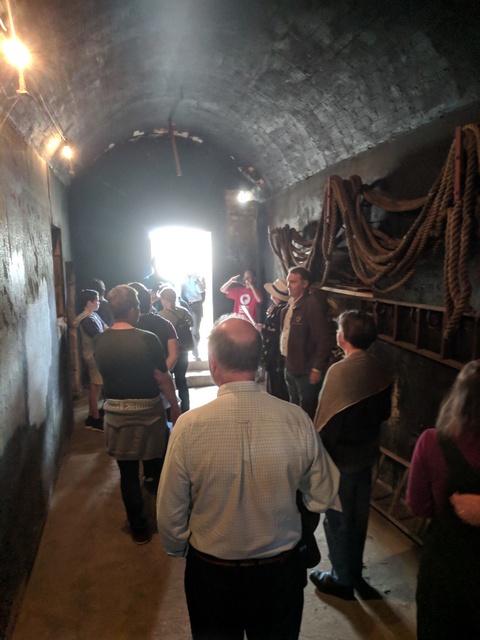Thanks to the team at Open House Hobart for another great weekend of privileged access and peeks behind doors that are normally closed, such as the fortifications beneath the Kangaroo Bluff at Bellerive, which formed part of the defenses of Hobart during the early years of the twentieth century, and again during WWII.

I took the opportunity to explore an old workplace, the Odeon Theatre. When I worked there in the late nineties, it was home to the Tasmanian Symphony Orchestra, but today it is home to more progressive rock and roll and is managed by the team behind Mona’s festivals and events. It had been under threat of being demolished to make way for new development, but it was good to hear that the owners have promised to retain it as a performance venue and work around it with their developments.
The doors of St Davids are not generally closed, but they aren’t doors I often go through either, so I took the opportunity to enter and take a few photos.
Hobart’s historic Treasury precinct was disappointing on the inside. Modern insertions of office space into these historic buildings appear to be doing no great favours to all but the most senior of those employed within. Effective re-purposing for some other public use would be a costly investment but would surely add considerably to the city’s heritage chops and appeal.
I’ve lived in New Town for around 25 years but before this weekend I had never set foot inside the local parish church. That was remedied on Saturday afternoon thanks to Open House Hobart. It sits at the centre of a precinct that encompasses the former orphan schools, social institutions and current social services. Much still to explore in my neighbourhood.
The recently-completed UTas accommodation facility in central Hobart brings a touch of Manhattan style to the city. I didn’t realise that there are public lane-ways running through the complex, and a public plaza behind it.
A significant mid-20th century office building in the middle of Hobart has been purchased by a thoughtful operator who is leasing spaces within it to creatives and cultural organisations. What was once a pretty anonymous block is now a hive of creative energy, housing designers, artists, makers and even the Bett Gallery. The views from the tenth floor rooftop are pretty good, too.
Esmond Dorney was a local architect working in the middle years of the twentieth century who brought modernism to Hobart in a big way. His houses, often built on a very modest scale from basic materials available at the time (think steel tubing, plywood and relatively small, fragile sheets of non-toughened glass). His own house on Porter Hill has been a feature of Open House Hobart for some years, as has this distinctive private home overlooking Bellerive Beach.
I had never heard of the Tuberculosis chalets that were used to quarantine sufferers, whose recovery was largely down to fresh food and fresher air. Two chalets have been conserved at St Johns Park in New Town. So many stories here still to uncover. A final post from Open House Hobart for this year.
It was good to catch up with The Gents, who offered a wonderful tour exploring the lost and hidden advertising signs of central Hobart, in the spirit of their book Signs of Australia.
Thank you Andrew. Enjoyed tripping around with you. Amazing photos. Mappie X
>